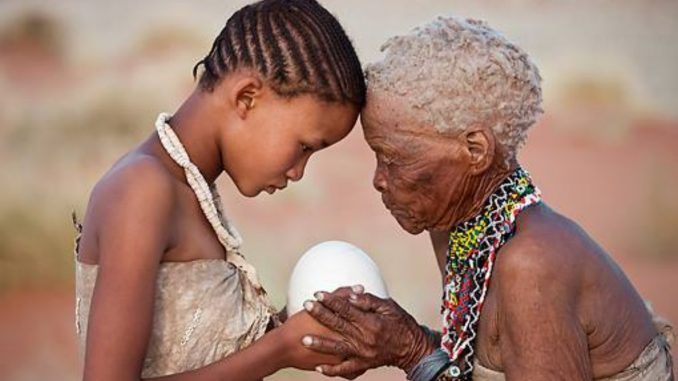
The San people are the oldest population of humans on Earth, according to the biggest and most detailed analysis of African DNA. The San are directly descended from the original population of early human ancestors who gave rise to all other groups of Africans and, eventually, to the people who left the continent to populate other parts of the world.
A study of 121 distinct populations of modern-day Africans has found that they are all descended from 14 ancestral populations and that the differences and similarities of their genes closely follows the differences and similarities of their spoken languages.
The scientists analysed the genetic variation within the DNA of more than 3,000 Africans and found that the San were among the most genetically diverse group, indicating that they are probably the oldest continuous population of humans on the continent – and on Earth.
The study, published in the journal Science, took 10 years of research involving trips to some of the most remote and dangerous parts of Africa to collect blood samples. The project found modern Africans had the most diverse DNA of all racial groups in the world, confirming the idea that Africa is the birthplace of humanity, said Sarah Tishkoff of the University of Pennsylvania.
The scientists also found genetic “markers” in the DNA of the present-day inhabitants of East Africa living near to the Red Sea, which indicated that they belonged to the same ancestral group who migrated out of Africa to populate Asia and the rest of the world. West Africans speaking the Niger-Kordofanian language were found to share many genetic traits with African-Americans, indicating they were the ancestors of most of the slaves sent to the New World.
One of the main findings to emerge was the genetic similarity between groups who shared similar languages despite living many thousands of miles from one another. The Sandawe and Hadza of Tanzania shared common ancestors with the Khoisan speakers of southern Africa: all three groups speak “click” languages.
For hundreds of years the San’s traditional way of life and their multi-faceted culture have fascinated explorers, missionaries, colonialists, researchers, anthropologists, businessmen, filmmakers,
photographers and artists. Despite the great interest they arose, it was an exception if the San were treated as equals and with respect. Until recently the majority of researchers and other individuals “considered the San to be primitive, childlike, and as something one must preserve in order to realize one’s own
difference and superiority.” (Thoma, 2009:32)
This notion is sometimes still prevalent in the way visitors approach San guides at the !Khwa ttu San Culture and Education Centre, situated about 80 km north-west of Cape Town. Nunke Kadhimo, a
young Khwe woman, was astonished to be asked “whether I am a real Bushman,” by one of the guests at the !Khwa ttu restaurant. When she inquired why such a question had been posed to her, she was told “You don’t look like a Bushman. A Bushman is a small person with light skin.” Nunke felt utterly upset that she was denied her identity because she did not fit the “stereotypical” San’s physical
appearance.
The preconceptions of San having the same physical characteristics, sharing one common language, being nomads, living a traditional life and not being familiar with the amenities of the modern world are still widespread. Although the San feel
saddened by the prevailing ignorance, they feel offended when they are disavowed their cultural affiliation.
Their social structure is not tribal because they have no paramount leader and their ties of kinship are fairly relaxed. They are a loosely knit family culture where decisions are made by universal discussion and agreement by consensus. An individual’s opinion is naturally weighted according to their level of skill and experience in the particular field of discussion.
Families within a clan would speak a common language but neighboring clans would usually speak a different tongue, although there would normally be a fair degree of similarity & understanding between them. Apart from family relations, bearing the same name (out of only about 35 names per gender) would also foster a “name kinship”.
San are generally nomadic within fairly limited boundaries, governed by the proximity of other families and clans.
As a very loose guideline, the territory of a family may stretch to a 25-mile circle. Obviously, if there are no other bordering clans or other people these areas may stretch further, as far as is needed to ensure adequate food and water sources.
The roles of men & women were very distinct and rarely overlapped, which is a characteristic almost universal amongst hunter/gatherers the world over. It based on survival needs encouraging the most efficient utilisation of available skills and resources. Despite what is often perceived as a very sexist society, the importance of women is
very high within the group and their opinions often take precedence, particularly where food is concerned.
BY: Kweku Darko Ankrah
